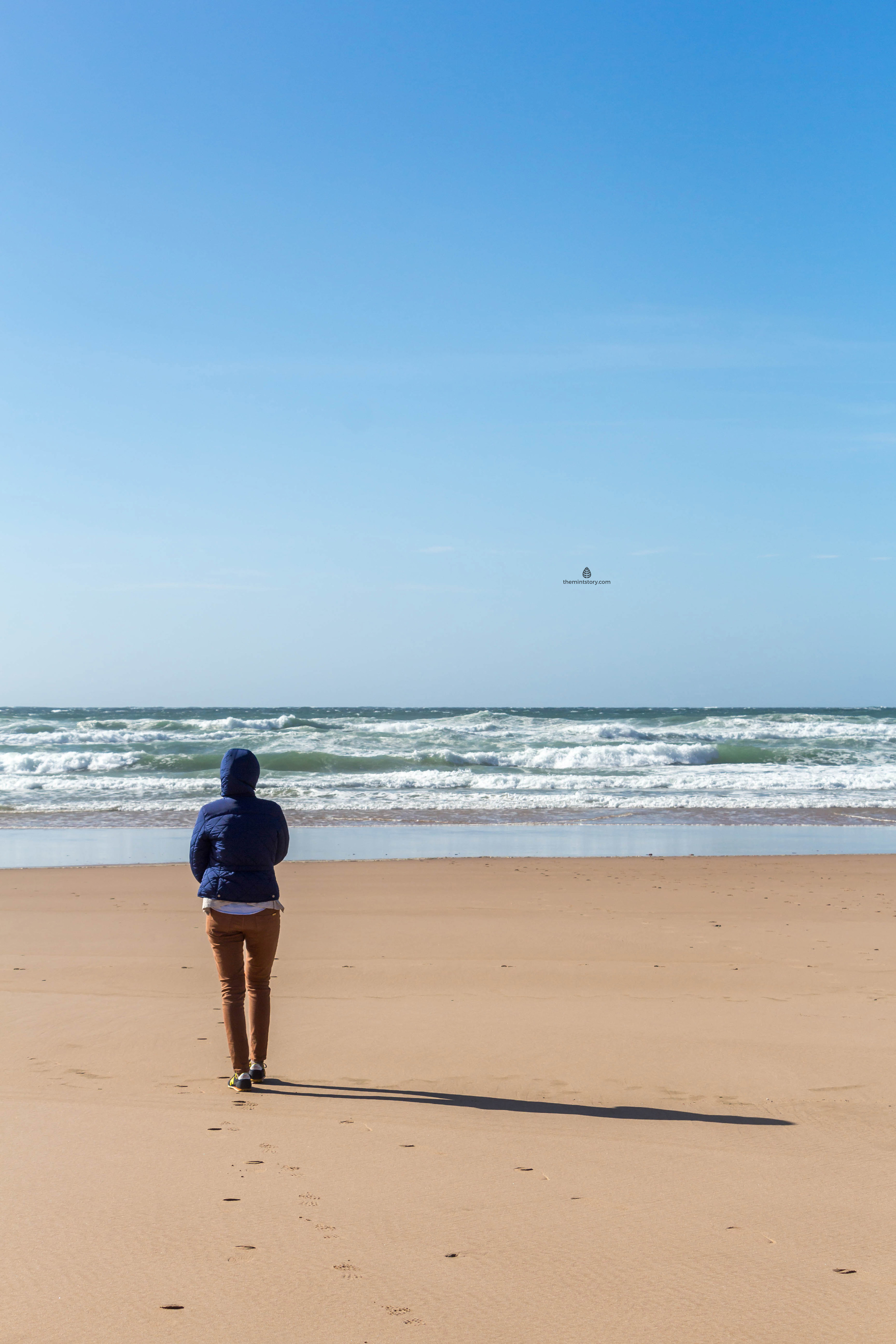Since the last two weeks have been pretty hectic, I failed to keep my one-post-a-week idea going. Today is Wednesday, the middle of another busy week and a perfect day to get inspired by browsing through my photos and sorting out my thoughts about our few days spent in the Alentejo region of Portugal.
The castle of Montemor-o-Novo in Alentejo
As I wanted to see a bit of everything- the big city, the countryside and the seaside, our next stop after Lisbon was the town of Evora in the interior of the country. Driving through the Alentejo region would be something I'd put on every itinerary when visiting central/southern Portugal.
The landscape resembles a painting with its wavy green meadows dotted with cows and sheep, shaded by puffy clouds and cork oak trees (this region is one of the biggest producers of wine bottle corks in the world), while the storks are nesting on almost every anchor tower.
When the landscape is beautiful, I really enjoy the drive, especially if there is a low traffic and the roads of Alentejo are literally empty- we would drive for half an hour without seeing another vehicle! We liked the landscape so much, that we decided to get off the highway and take a laid back drive through the picturesque countryside.
The ruins of the Montemor-o-Novo castle
On the way from Lisbon to Evora, there is a town of Montemor-o-Novo with medieval ruins on top of the hill which dominate the whole scene. Since we weren't in a hurry, we decided to visit the city and its ruins, and it turned out to be a lovely day trip! The town below feels as if the time has stopped- steep cobbled streets are lined with white washed houses with colorful window frames, elderly residents accompanied by few lazy cats are sitting and chatting in front of their houses and the whole atmosphere is a bit sleepy (but in a good way)!
Poisonous green tile facade in Montemor-o-Novo
The medieval ruins on top of the hill are dating back to 13th century and some parts like the entrance gate, defensive walls and some of the towers are still standing today. The view of the land is amazing, the entrance is free of charge, and you can basically roam around and climb the ruins as it suits you.
It was evening already when we reached Evora so we didn't have much time (or energy!) to explore the city. Followed by good reviews on Tripadvisor we roamed out of the city center to find a family restaurant called Vinho e Noz, specialized in great local meat- we had grilled black pork and steak made on a hot stone for dinner and it was delicious!
While planning our trip I was looking forward to indulge in great seafood everyone talked so much about, but we ended up eating meat and cheeses (and drinking wine) most of the time, as the local products of Alentejo are of such high quality!
Our morning in Evora started in a charming pastry shop called Pastelaria Conventual, where we had the best pasteis de nata in whole Portugal (including the ones we've tried in Belem, their place of origin). Except pasteis de nata, they have all sorts of local sweets, and they're all delicious! If you're visiting Evora, do not miss this place!
The main square of Evora
The temple of Diana near the cathedral
Evora is a city listed on Unesco world heritage list, thanks to the density of monuments packed inside of the old city walls. We visited the medieval cathedral which resembles a fortress and has a beautiful, peaceful cloister, the ruins of Roman temple of Diana next to the cathedral and the peculiar Chapel of Bones (Capela dos Ossos).
The cloister of the cathedral in Evora
View of the cloister from the cathedral walls
Capela dos Ossos it is a chapel whose interior is completely covered (adorned) with human bones. I've heard about it before, but have never seen one in person and I was amazed by how the human bones served as a decoration to this chapel- the skulls are lining the arches of the nave, the pelvises are put as keystones and the side walls are covered in bones from bottom to top! The inscription above the entrance says something like: " We bones that here are, for yours await", as a reminder of transience of life.
After the unusual experience in Capela dos Ossos we headed south, to our next destination. On our way to the southwestern most point of Portugal (Cape Sao Vicente), we made a stop on one of the numerous Alentejo beaches. It was the beach of Carvalhal near Odemira, first in a row of beautiful beaches we've seen in Portugal. The wind was so strong that I barely dared to peak my nose out of the car, but in the end I couldn't resist the beauty of steep cliffs, clean sand and big, ocean waves, so we took a short walk, breathed the salty ocean air and left for Algarve.



























